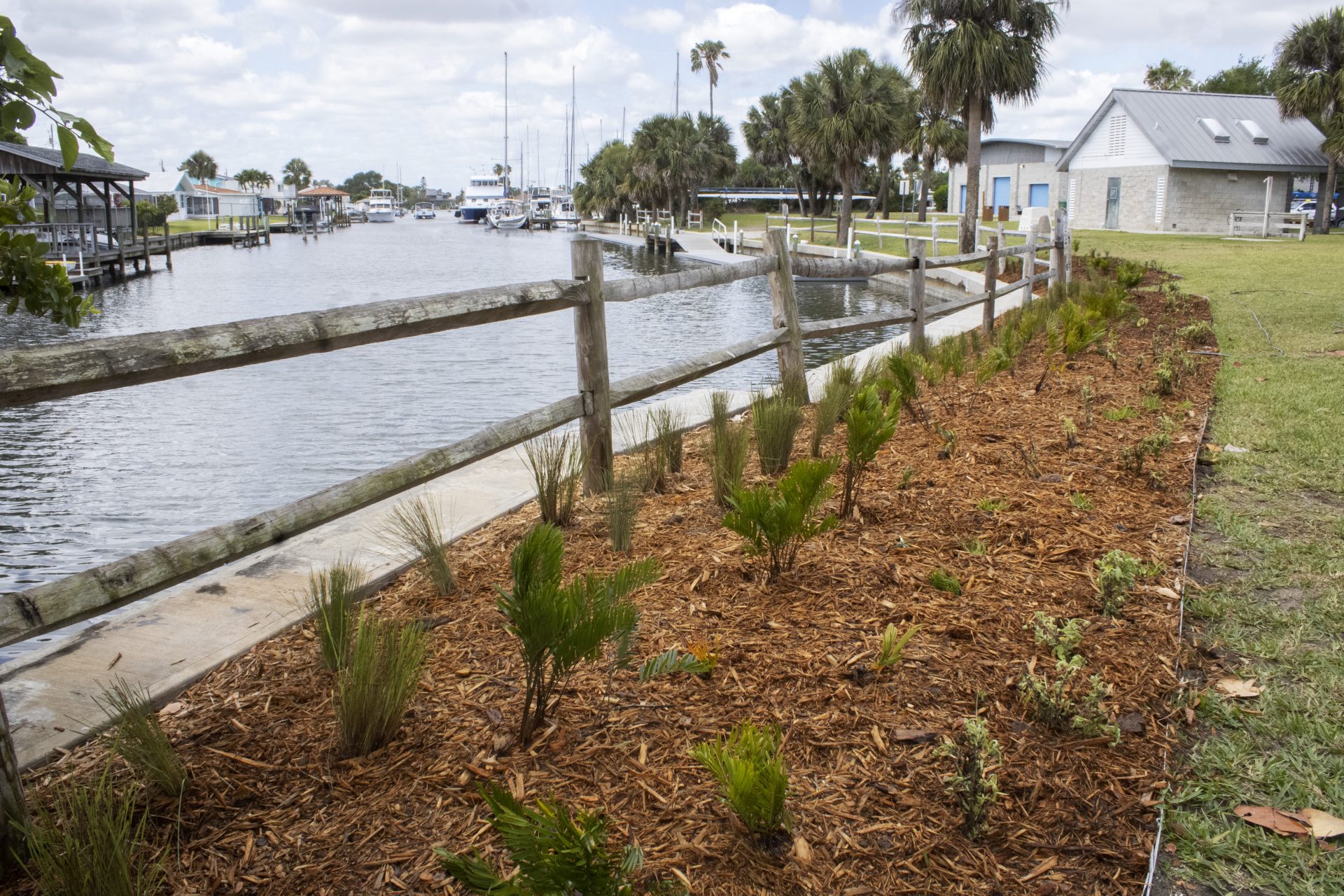Brevard Zoo‘s Restore Our Shores team has completed its latest project to aid the recovery of Florida’s Indian River Lagoon, planting a buffer zone at Oars and Paddles Park in the Town of Indian Harbor Beach. The buffer zone, which protects the lagoon from fertilizers and excess freshwater by creating a “no-mow” area with native vegetation, was funded by the Doris M Carter Family Foundation. In contrast to mangroves, which cannot be planted in specific locations along the shoreline, buffer zones using native plants provide habitat for local wildlife, such as bees, butterflies, mammals, and birds, while preventing erosion more effectively.
Have you ever heard of buffer zones? These are areas of land between developed areas and natural ecosystems that work as a transition zone where activities like agriculture, forestry, or urbanization have a limited impact on the ecosystem. In lagoon environments, buffer zones are crucial in managing marine ecosystems.
When properly planned, designed, and managed, buffer zones can help reduce runoff pollution, sediments, and nutrient loading in lagoons. By doing so, they improve water quality and benefit the local ecosystem.
To establish a buffer zone, the first step is to identify the critical areas where the buffer zone will be located. Usually, these areas are adjacent to the lagoon and its tributaries. Then, the buffer width is determined depending on the local conditions and the zone’s objectives. Careful consideration is given to slope and soil types, vegetation, and proximity to activities that may impact the lagoon negatively.
Vegetated buffer zones are one of the most effective types of buffer zones. Vegetation is essential in stabilizing soil and reducing erosion, improving water quality. A combination of trees, shrubs, and grasses can be used in a lagoon environment. Native species are preferred as they adapt to local conditions and require less maintenance.
The benefits of buffer zones in a lagoon environment are numerous. Reduced nutrient loading, sediment, and pollutant runoff can improve water quality. Properly managed buffer zones can also provide habitat for many native species of plants and animals. By providing a transition zone between developed areas and natural ecosystems, buffer zones can help create a balance that enables human activities to coexist with nature.
In conclusion, using buffer zones is a critical strategy in conserving lagoon ecosystems. While establishing and maintaining a buffer zone’s vegetation can take some effort, the benefits to the local ecosystem make it well worth it. By protecting the lagoon and nurturing its surroundings, we can ensure that this vital natural resource will continue to be a critical part of our communities.


